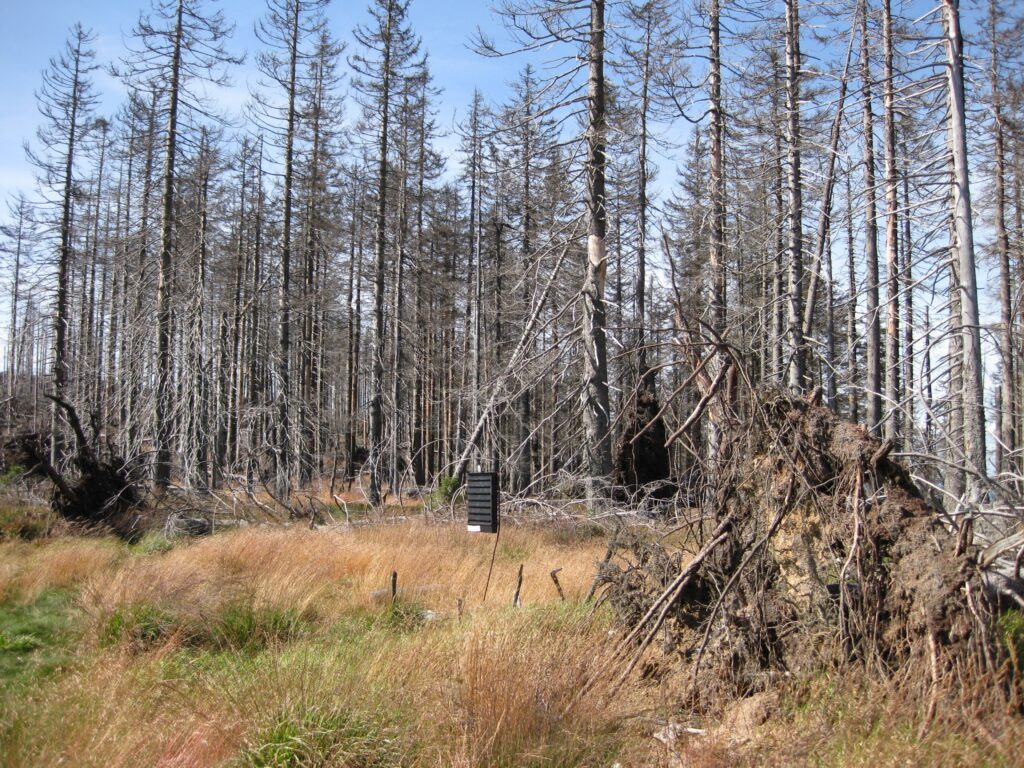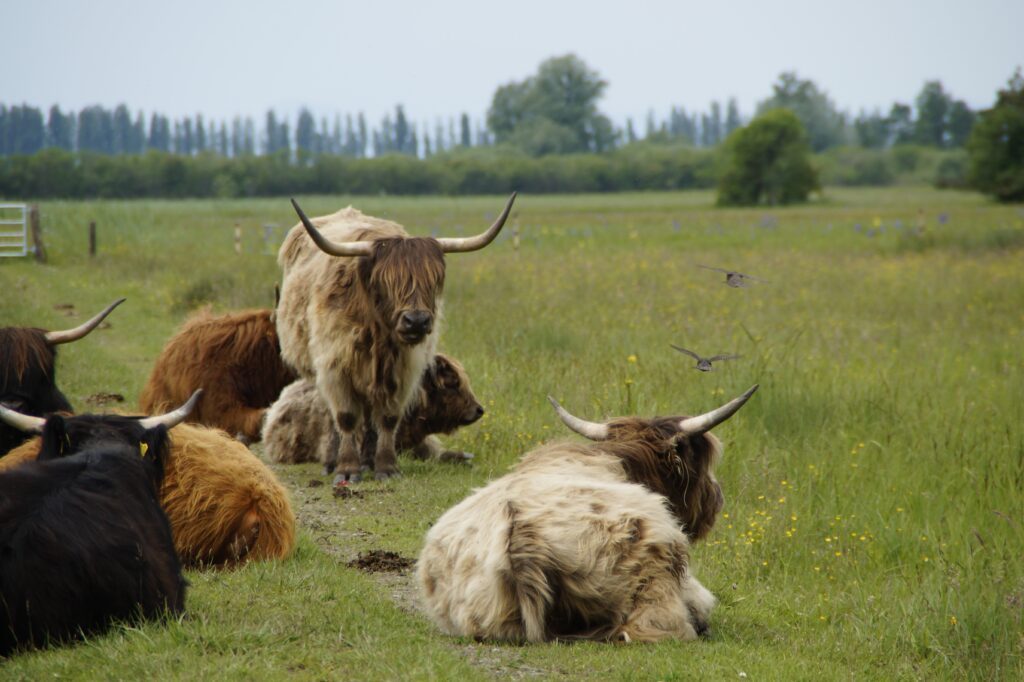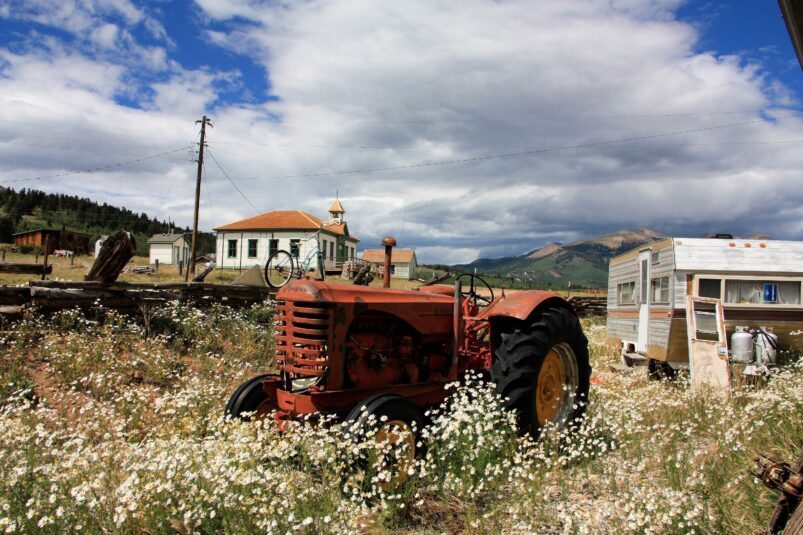Biodiversity in Europe is on the decline. The European Union has recently set new goals to rejuvenate landscapes and encourage farmers and landscape managers to provide space for flora and fauna. How will the EU’s targets work out on a local scale? In this interview, researcher Catherine Fayet shares her views on this complex issue.
Written by: Teun van den Ende.
It’s time to reconsider our outlook on nature and accept that landscapes abandoned by humans nowadays rank among the most biodiverse, author Cal Flyn argues in her book ‘Islands of abandonment: Life in the Post-Human Landscape’. She draws this conclusion after having visited some of the Earths most damaged and desolate terrains, ranging from heavily guarded border strips where humans not dare to set foot in risk of being shot, to former industrial sites gone to waste. From Chernobyl to a small island off the coast of Scotland, in almost all spots where humans have left, vegetation has flourished and the animal kingdom has adapted.
Flyn’s claim leads one to reconsider whether the current decline in biodiversity might best be countered by (human)planned ‘Rewilding’, or by just simply leaving nature to ‘take over’. This is exactly the research topic of Catherine Fayet, a young researcher in the EU-sponsored Terranova research program. She recently published a paper in the January 2022 volume of Land Use Policy on the future of abandoned agricultural lands, based on a survey of 135 sites that used to be farmed, but now have acquired different uses, ranging from spontaneous revegetation to urbanisation. One of her conclusions is that the abandonment of farmland can contribute to biodiversity and environmental policy goals, in accordance of Flyn’s findings.
On the other hand, Fayet isn’t convinced that agricultural use opposes biodiversity, providing that the land is managed in a sustainable way. Through her research Fayet has become more and more enthusiastic of a mixed approach towards landscape management, “not based on 100% rewilding but allowing farming too, in a sustainable manner.” Multiple examples exist that this strategy not only helped to enhance nature but also to develop regional economies. Like in the case of a couple of islands off the coast of Estonia, that had become overgrown. “Neglected areas were cleared and restored, with funds by the EU. Due to good capacity building and community involvement the area has profited economically.” Fayet is referring to the reintroduction of cattle to the area that has helped establish a more balanced ecology. Henceforth, a meat production market has been set up that has created jobs for the islanders.
Besides looking into different promising examples, Fayet also asked land owners in different European countries about the reasons for land abandonment to deepen her research: “I found that landscapes were re-managed after a period of neglect by allowing cattle to graze there for just one period in a year. These people might not be interested in maintaining the landscape but do the minimum, just to get subsidies from Europe.” Although the interviews delivered valuable insights on a local scale, she found it difficult to draw general conclusions that made sense in the different types of regions she researched. However, she did gain many insights into the ways in which the European and local governments influence the ways in which land is managed.

All of the 15 Terranova-researchers including Fayet have been busy developing a policy toolbox to the European Union on how to move from policy making to implementation. A week-long program will take place in March to involve politicians in the scientific program. Different organisations such as the European Landowners Organization and the International Union for Conservation of Nature (IUCN) are also on board. It’s in the the European Union’s interest to incorporate meaningful insights from science, since Europe is striving to become the first climate neutral continent. In order to reach this goal by 2030, three billion trees will need to be planted on top of the current number, doubling the ‘business as usual’-scenario. This means every year 600 million trees will be planted.
How does Fayet think such bold targets will work out on a local scale? “The EU needs to set quantitive goals to respond to the growing amount of people who demand that governments ‘stop talking and act now’. But planting trees is a rather fashionable way of compensating for loss of biodiversity. It has even become a popular offer by flight operators towards their consumers. However, it’s not only a question of how many, but where and how you plant the trees.” Fayet points out that specific strategies might be more effective in dealing with heat island effects in urbanised areas: “It could start simple, for instance by replacing parking areas with vegetation and putting more trees in gardens. In rural areas other measures might even prove more effective to increase biodiversity, like limiting the use of chemicals and soil restoration.”
Fayet also believes that sectors such as construction or mining, should be involved. “Strategies to counteract loss of biodiversity are mostly associated with rural areas, but it would be hypocritical to limit improvements in biodiversity to the reintroduction of European bison or lynx in marginal landscapes.” She refers to these large mammals, because they are frequently used by nature conservation organisations as flagships for their nature-based strategies.
But focussing only on conserving habitats for these mammals isn’t sufficient, Fayet argues: “Rewilding can backfire if we don’t talk to local people, who live in the area and have to able to make a living. In Romania, for example, Fayet has heard of examples where authorities have enforced rewilding and strict protection without compensating land-owners, leading to conflicts between people with wolves and bears. Such problems occur when rewilding is enforced at the cost of people.”
Enforcing targets from the top-down in order to achieve sustainably managed landscapes has already caused unwanted side-effects, as Fayet points out: “Migrating birds are being killed by wind turbines because their locations haven’t been planned properly. This shows that a lot of work in spatial planning is necessary. Sometimes people working in top-level governments who often live in cities, don’t know where targets can best be implemented because they might not be fully aware what regions need.”

But will locally forged examples be strong enough to counter the large-scale effects of biodiversity loss? Yes, argues Fayet – conjuring up different examples of how agricultural initiatives that complement the landscape can help rejuvenate soil, natural features, and bring back jobs. In the region of Andalusia in southern Spain, different kinds of farmers are working together to change to more sustainable ways of farming, including businesses growing fruits (like olives), nuts and herbs. Because these initiatives support, rather than deplete the landscape, nature has been rejuvenated only seven years after the start of the initiative. Views over the landscape have become attractive again, luring tourists to the region.
Organisations in other European countries are developing similar methods, like Fundatia ADEPT (Romania) that is bridging the gap between farmers and local markets and Terre de Liens (France) that is helping young farmers to access lands and advises on sustainable farming methods. Fayet: “Younger farmers generally have more dynamic ideas for the future. Older generations often lack resources or training, or don’t see the point in changing their farming strategy, perhaps because they are close to retirement.”
Coming back to policy making on a EU-level, Fayet firmly believes the EU should be careful when trying to force it’s member states into a certain direction. “Without translation to a regional context it won’t work. Climate change is inflicting all kinds of different effects, such as wildfires in one place and soil degradation in another. What is necessary is a better synergy between different policies, involving farmers and ecological actors together.”
She’s not interested in accusing the agricultural sector for the loss of biodiversity, as some environmentalists do, but rather points towards the existing stimuli that influence farmers in their business strategy. “Very often small landowners don’t get any support from the CAP, because it allocates subsidies per hectare of farmland, which is in favour of large farmers.”
Every six years the EU Common Agricultural Policy (CAP) is revised, traditionally leading to lot of debate on how the billions of euro’s should be spent. Which changes does Fayet think are necessary in the new policy period, that is due to start in 2023? “In many European countries competition for (agricultural) land and production targets is enormous. If the EU says to national governments that they should ‘try their best’, you know beforehand you’ll stand the risk of only getting a minimal effort from them. Therefore, the EU should establish concrete goals for biodiversity.”
Which societal challenges in the context of heritage, landscape and the built environment would you like us to address in our future articles? Please get in touch: @Future4Heritage on twitter or email
This article is part of a series ‘Future Making in the Anthropocene’ that focuses on imagining better-balanced future scenarios for European cities and landscapes, made possible by the generous support of the Creative Industries Fund NL.
TerraNova has received funding from the European Union’s Horizon 2020 research and innovation program under grant agreement No. 813904.

